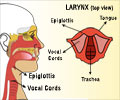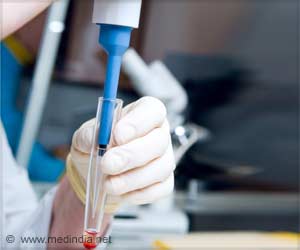The bio-engineered tissue was grown over the course of two weeks, using healthy vocal fold cells from patients who had these cells removed for unrelated reasons.

‘Vocal cords are a hard thing to replicate. Researchers have succeeded in growing vocal cord tissue in a lab, and this advance could help restore the voices of millions who suffer from cancer or other diseases.’





The tissue has been shown to last for three months in mice that were engineered to have a human-like immune system, and produced sound vibrations when transplanted into intact voice boxes from dog cadavers. Lead researcher Nathan Welham, a speech-language pathologist from the University of Wisconsin at Madison, said, "The advance is important because vocal cords are an exquisite system and a hard thing to replicate."
The study said, "The bio-engineered tissue was grown over the course of two weeks, using healthy vocal fold cells - known as fibroblasts and epithelial cells - from surgical patients who had these cells removed for unrelated reasons. The cells were isolated, purified and applied to a three-dimensional collagen scaffold, much like the kind scientists use to grow artificial skin in the lab. When grown, the cells assembled into layers that closely resembled the structure and protein makeup of natural vocal cord mucosa."
To see if the engineered tissue would work, it was transplanted into voice boxes that had been excised from deceased dogs. When humid air was blown through, the tissue vibrated and produced sound the way scientists expected it would.
Welham said, "The engineered tissue also feels like natural vocal cords, and is moist and elastic like the real thing. While it will likely be years before such engineered tissue is widely available to those in need, our work is a promising step forward for the those with vocal cord dysfunction, which affects 20 million people in the United States and has no effective cure. Voice is a pretty amazing thing, yet we don't give it much thought until something goes wrong."
Advertisement









